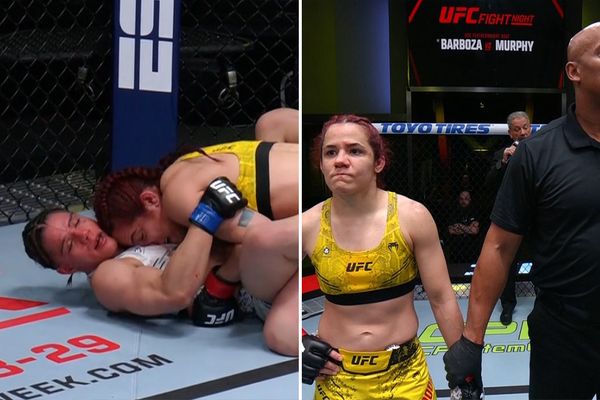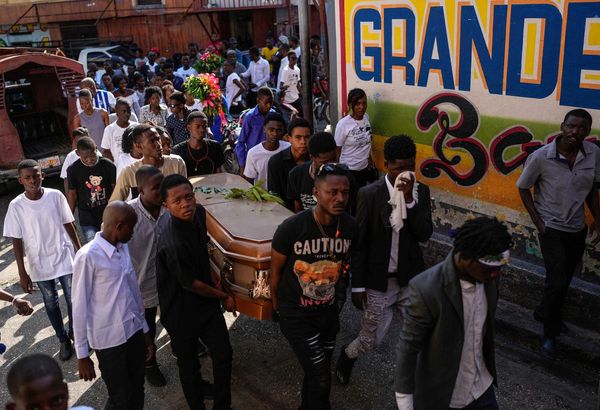
“Hell hath no fury like a wealthy person being told no,” says Alex Pardoe, an Hermès superfan and TikTok creator, recalling the many times he has seen “grown men and women having five-star meltdowns” within the otherwise fragrant environs of the Hermès flagship store in Paris.
These tantrums, says Pardoe, are always sparked by the same conflict: a rich person walks in, asks to buy an Hermès Birkin – fashion’s most high-status handbag, which costs $10,000 or more – and is told that none are available. This happens a lot, because Birkins, according to luxury handbag lore, are not mere products to be sold over the counter like cans of baked beans. Buying a Birkin takes more than money, so the received wisdom says: deliveries are limited and sales associates will earmark them for their favourite clients.
Such stories have been reverberating around the internet for the past fortnight, after two California residents sued the French mega-brand after thwarted attempts to buy the bags. Their suit accuses Hermès of “unlawful tying”: getting customers to buy items such as scarves, jewellery, clothing and home goods to demonstrate “sufficient purchase history”, in order to prove themselves “worthy” of a Birkin. Whether or not it is successful, the suit has raised questions about how Hermès cultivates an air of exclusivity in an age of resale, and it has shone a light on the extreme lengths some customers will go to to convince Hermès that they are Birkin material.
Though Hermès (which did not respond to requests for comment for this story) has not confirmed the “tying” practice, there have been complaints of the alleged system. In China, it is called peihuo. Jing Daily reported two protests outside stores during the summer of 2021, with one customer holding a sign that read, “Rubbish Hermès. Peihuo but no bag.”
On US and European forums such as r/TheHermesGame – where shoppers swap tips and tricks and share their own try/fail cycles of Birkin acquisition – the alleged practice is called a “prespend”. Debates about how much that “prespend” actually is (some say $20,000-$30,000; others say it’s more important to show “appreciation” of different merchandise categories), whether it exists, and whether it varies from store to store are all hot topics. Such forums offer other advice for would-be Birkin buyers: they decode the lingo (“quota” bags, for example, are the premier handbag styles, such as Birkins and Kellys, of which even favoured customers are only allowed to buy a maximum of two a year) and give tips for striking up meaningful relationships with sales associates (known as SAs) in the quest to attain what one Redditor called “the Scientology of purses”.
A lot of the forum obsessives seem to enjoy the process, even when they admit to having spent tens of thousands on homewares they might not have really wanted, and even if that enjoyment is grudging at times. “The thrill of the chase really gets people hooked, addicted, to the process of obtaining one,” says Pardoe, whose work as a celebrity hairdresser (he specialises in hair extensions for clients including Lindsay Lohan and Paris Hilton) funds his own Birkin habit.
Roxana Voica, a software developer who saved up to buy a Birkin for her 25th birthday, says the appeal is “artificial scarcity”. She was dogged in her quest, searching through Instagram for posts made close to the location of a Hermès boutique in Dubai, where she was going on holiday, to find an SA to DM before arrival. She says the SA advised her that she would need to spend $27,000 (100,000 AED, £21,000) to get a Birkin. On her first visit to the store, with another SA, she bought some sandals and a belt but was told that the store didn’t “really” have any Birkins “for tourists”. Then she reconnected with the original SA, whom she describes as “truly a gem”, who told her that the brand was due a restock before the end of her holiday – and eventually she was successful. Getting a bag feels “like winning the lottery”, she says. “It’s just like a game – it’s definitely psychological. Because it’s so rare and also very expensive, it is like becoming a part of a very niche group who ‘made it’. I don’t think the hype and the resell prices would be so high if the bags were more easily available.”
Literally speaking, the Hermès Birkin is just a bag: trapezoidal in shape, with two handles, a bit of glinting hardware and a flap, only materially different from other luxury handbags because it is still handmade.
Scarcity has been essential to the Birkin’s appeal since it first shot to popularity during the It bag days of the late 90s and noughties. It was inspired by Jane Birkin, after a chance meeting between the singer and actor and Jean-Louis Dumas, then Hermès’ executive chairman, on a flight. The bag was launched in 1984 but didn’t become truly famous until a 2001 episode of Sex and the City, in which Samantha Jones’s thwarted attempts to get a Birkin were a big plot point. In the episode, Jones explains that the bag’s appeal is not its design but its significance: “When I’m tooling around town with that bag, I’ll know I’ve made it,” she says. On her first attempt to buy one, she is told there is a five-year waiting list. “For a bag?” She balks, to which the sales associate replies:“It’s not a bag, it’s a Birkin.”
Michael Tonello wrote a 2008 bestselling book, Bringing Home the Birkin: My Life in Hot Pursuit of the World’s Most Coveted Handbag, about his own experiences flipping Birkins in the late 90s and noughties. His business began when the singer-songwriter Carole Bayer Sager contacted him on eBay (he was selling Hermès scarves at the time) to ask him if he could source a Birkin. He believes the allegations in the lawsuit reflect the reality of Hermès’ business model, as he experienced it at the time, when the official line was that there was a waitlist for Birkins – something Tonello never quite believed. Ninety-nine per cent of the time, he says, “if I spent somewhere in the vicinity of $5,000 first, then asked for the bag, they would sell it to me”. Tonello’s impression was that the Birkin “was positioned as a reward for being a good customer”.
Tonello was eventually put on the brand’s infamous “no fly” list when Hermès got wind of his business. (The news was delivered with typically Hermès politesse: they sent a fax saying that they were cancelling his special orders “because there was a shortage of leather”, he says. “I was kind of like: this seems a bit fishy.”) He describes the Birkin-buying process as “a finely tuned ruse” – a way to maintain a sense of scarcity about the bags while getting “people to buy all that other stuff that, pretty much, people don’t buy at Hermès”.
Whether artificial or real (Hermès does not disclose how many it produces annually), it is a perception of scarcity that has helped Birkins endure, while other It bags of the noughties have long gone out of fashion. While the resale market has opened the market up beyond the stores, only high-rollers can access resale bags. Now perceived as an investment – bags bought in store often fetch double the price at resale; rare, diamond-studded iterations have sold for as much as $450,000 at auction – Birkins have been toted by every celebrity imaginable (Victoria Beckham has a huge collection; the Kardashians are awash in the totes; Kate Moss memorably used one as a nappy bag). Even rumblings of a turning tide in 2022, when Beyoncé sang that she preferred Telfar bags in the lyrics to Summer Renaissance (“This Telfar bag imported, Birkins, them shits in storage”) have yet to dent the bottom line. Last year Hermès reported €12bn ($13bn, £10bn) in annual sales; in April 2023, its market capitalisation rose to €210bn ($228bn, £180bn), surpassing Nike despite the vastly smaller number of goods sold. This success is owed to the “quality and scarcity of its leather goods”, according to the Business of Fashion.
The way Jeffrey Berk, CEO of a major Miami-based Birkin reseller, Privé Porter, tells it, there are two kinds of Birkin buyers: those who are prepared to do the required “grovelling at Hermès”, and the people who are not, who will come to him to buy Birkins for double the ticket price. His clients include Paris Hilton, Kris Jenner and a lot of rappers including Cardi B, Offset, Lil Baby, Gunna, Tekashi69 and “Kanye West – unfortunately, before we realised who he was”. Many of these clients (“a Jordanian prince, a Saudi royal …”) are people “who don’t want to walk into Hermès and be told what to do”.
Many customers are among the super-rich 2% of luxury customers who, according to Berk, drive 40% of luxury sales. Still, he says, his celebrity clients get turned down in Hermès all the time, though he won’t say it is ever about bias or snobbery. Rather, he claims, his clients don’t want to play the game: they want “to get the exact colour, size and hardware that they want”. They do not want to buy other Hermès products in order to be deemed Birkin-able. They have the affluence to buy “the $25,000 desk, or the $10,000 bicycle – these are real prices – or the $45,000 trash can” from Hermès, but they are not prepared to be “stuck with a whole bunch of stuff that they don’t want”. Or else they want more bags than Hermès will give them, he says, telling me about the day in 2015 that Kris Jenner walked into his pop-up shop in Aspen, Colorado, and told him that she and her daughters could not quench their Birkin thirst because “no matter how much they were spending, they could only get two bags a year – it was a hard and fast rule”.
Berk claims that 70% of his stock comes from Hermès’ VIP buyers, who will sometimes buy bags in colors they do not really want if SAs offer them. By that point, he says, clients are “so invested with the SA and with Hermès” that they are scared to say no, worried they will get the Hermès equivalent of a “negative Uber rating” if they don’t gratefully accept. So they will email Privé Porter, to double check that the company would be interested in trading or reselling (they will write: “they’re really pushing me on rose petal”, he says), before they make the purchase.
Clearly, a complex ecosystem has sprung up around Birkins that is making a lot of already rich people – customers flipping Birkins, Birkin resellers and Hermès itself – an awful lot of money. If the allegations are true, and lawsuit is successful, it could disrupt that ecosystem significantly. It seems unlikely that Hermès would flood the market with Birkins, given the brand’s dedication to scarcity. But it might have to find another way to cover the alleged loss of income from ancillary products, if clients suddenly felt less inclined to prove themselves as “loyal” by buying things they don’t actually want, as the suit alleges.
The lawyers I spoke to felt the suit was unlikely to succeed. Rania Sedhom, a luxury specialist attorney at Sedhom Law Group PLLC, said: “I just don’t think they can prove what they are complaining of – but even the complaint itself has some flaws. It’s not just that I think they’re going to ultimately lose it,” Sedhom added. “I don’t think the case is going to move forward.” Danielle Garno, partner and co-chair of the entertainment practice at Holland & Knight LLP, agrees that the suit looks like “a very tough uphill battle for the plaintiffs” in part because the plaintiffs would “have to prove that Hermès has sufficient economic power in the market with the Birkin and Kelly bags to essentially shut out competition in the market of the other ancillary products (belts, scarves, home goods, etc)”, which they do not seem likely to be able to do.
There’s a another fly in the ointment: Berk tells me he thinks the lawsuit will fail because he can’t see who would want to join the class action, given that the last thing most Hermès shoppers want is to risk being put on the blacklist.
Having covered the Birkin beat for decades, Tonello says he is still somewhat amazed by the endurance of these alleged sales tactics. They just seem “a bit rude. I have found it really odd that wealthy people that seem to be able to get what they want put up with this type of thing from a store.” He surmises that “there are a lot of people with self esteem issues that buy into this whole thing – there’s a whole psychology of this that Hermès has worked very well to their advantage”. Perhaps the truth is that many of those customers, for whom so much else comes easily, are hooked on the game of Birkin-hunting, and enjoy perceiving themselves as the type of people who can navigate unwritten rules. Berk, who scoffs at the lawsuit, calls it “a game of kings. If people are suing because they are not a king … I’m sorry – it’s just the way it is. It’s just reality.”







